How to Play Power Chords on Guitar
The first chord shape I teach most of my students is the power chord.
Why?
Because if you know how to play power chords on guitar, you can play, at least in part, most rock songs.
It’s two fingers, on two adjacent strings, and it’s movable. That means you just have to move it up or down the neck to play a different chord, but your fingers play the same shape. It’s hard to find an easier or more versatile chord shape!
It’s also neither major nor minor (those are chord qualities, and if you’re not familiar with the difference, that’s OK, but that’s a lesson in and of itself), and can be used for either in a pinch.
A power chord can be the difference between playing a song all the way through or not.
For completeness, I’ll note that you can play a power chord on two strings or three strings. The difference is subtle and not enough that it’s worth it for a beginner to struggle with that extra note. So, for that reason we’ll cover the two-string version here.
You can play power chords with the bottom note on the 6th string or on the 5th string.
Note: This lesson uses a lot of chord diagrams. If you need help reading them, click here.
How to Play Power Chords on Guitar with the Root on the 6th String
The example below places your index finger on the 2nd fret, but you can play this chord shape up and down the 6th string. Your ring finger or your pinky, whichever is easier for you, is placed two frets up and one string over. In this case, that’s the 4th fret of the 5th string.
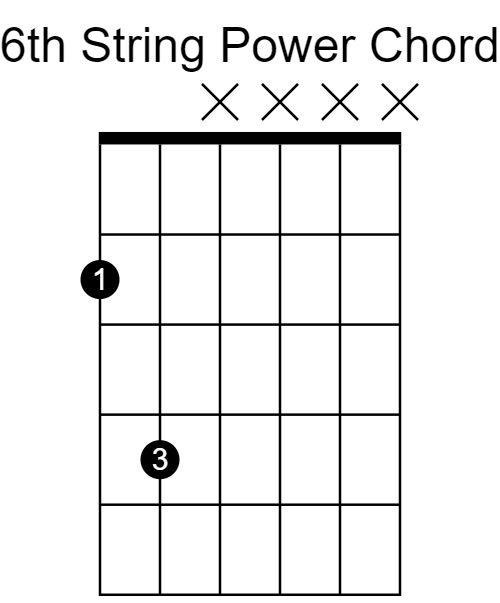

It really doesn’t matter if you use your ring finger or pinky for the higher note – I find that I switch between them depending on what I play before and after the chord.
How to Play Power Chords on Guitar with a Root on the 5th String
You can use the same exact shape, just moved over so that your index finger is on the 5th string, and your ring or pinky finger is on the 4th string.
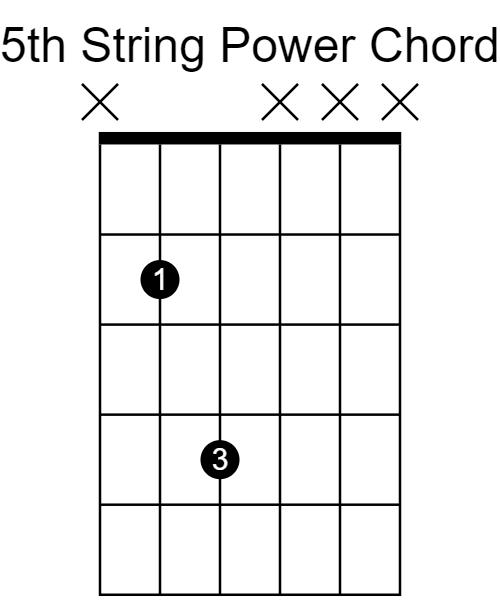

Once again you can use your ring finger or pinky and you can move this shape up and down the string to play different chords.
Open String Power Chords
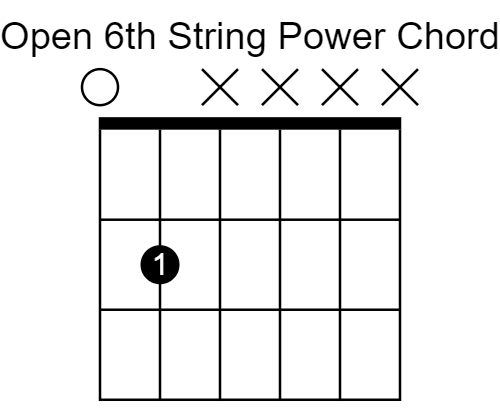
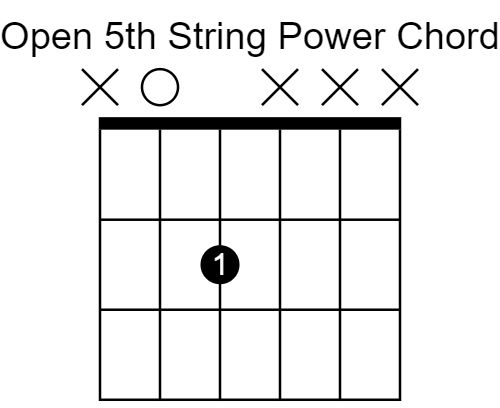
There is an open string power chord for both the 6th string and 5th strins
Naming the Power Chord
You can refer to the fret number of your index finger when naming your power chord. However, if you know the notes on the strings, you can use the name of the noted being fretted by your index finger (in this case, this is the root note of the chord). For example, playing a power chord with the index finger on the 6th string, 5th fret is an “A” power chord.
If you want to be really fancy, the technical name of a power chord is a “five chord”, written with the note name followed by the numeral 5.
So, A5, in this case:

Of course, you can play A5 in more than one place on the guitar fretboard. The open 5th string power chord is also an A5 chord:
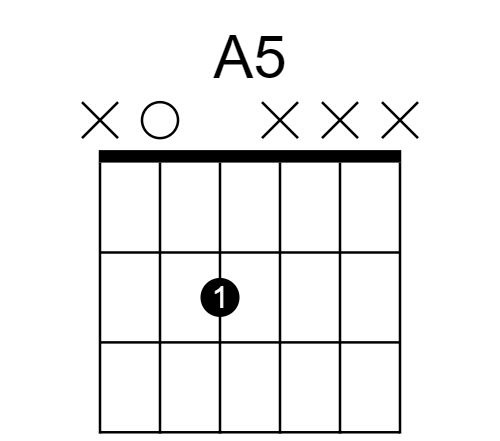
Why is it called a 5 chord? The short answer is because it contains only the root and the 5th of the chord. If you don’t know what that means, that’s OK. That’s a lesson for another time – just file it away for now.
Tips
- It’s OK if your index finger lays across the other strings – they’re muted anyway.
- Same for your ring finger or pinky.
- If you find it difficult to play power chords on the lower frets, try moving up the neck. The frets are closer together and not as much stretching is required.
Exercises
Once you’re comfortable with the basic shape, you’re ready to work on moving it around the neck. I’ve prepared a handful of exercises to give you practice with that.
Each one covers 12 different chords, all played with this one basic shape. I’ve indicated the root note for each chord.
- Play them through at whatever speed is comfortable for you.
- Strum the chord once.
- Know where you’re moving next before you change chords.
- Change chords, strum once and repeat.
- Worry about speed after you know the patterns.
As a secondary benefit, these exercises will help you learn the notes on the 5th and 6th strings, which is a helpful skill to have, especially if you’re playing with others.
Click here to download the PDF of the exercises.
Need help reading tab? Click here.
Questions?
If you have any questions or you are interested in a free trial lesson, click the button below.